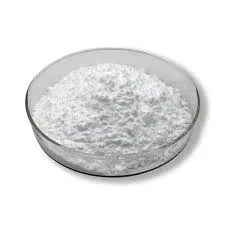
Oct . 18, 2024 18:23 Back to list
Exploring Different Types of HPMC and Their Applications in Various Industries
Understanding HPMC Types A Comprehensive Overview
Hydroxypropyl Methylcellulose (HPMC) is a versatile cellulose derivative that has gained substantial attention across various industries, particularly in pharmaceuticals, food, and construction. As a non-ionic, water-soluble polymer, HPMC is valued for its diverse functional properties, including thickening, binding, film-forming, and emulsifying capabilities. This article aims to provide a comprehensive overview of the different types of HPMC and their applications.
Types of HPMC
HPMC is classified based on its viscosity and the degree of substitution, which refers to the number of hydroxyl groups that are replaced by hydroxypropyl and methoxy groups. The main types of HPMC include
1. Low Viscosity HPMC This type typically has a viscosity of 100 to 400 mPa·s (cP) when measured at a 2% concentration. Low viscosity HPMCs are commonly used in applications where rapid dissolution is required, such as in instant food products and pharmaceutical capsules. Their quick dispersibility makes them ideal for applications in tablets and granulation processes.
2. Medium Viscosity HPMC Ranging from 400 to 1200 mPa·s, medium viscosity HPMC offers a balance between performance and processing. It is widely used in the preparation of controlled-release formulations, wherein a gradual release of active ingredients is crucial. These properties make medium viscosity HPMCs suitable for applications in both solid and liquid formulations.
3. High Viscosity HPMC High viscosity HPMC starts from 1200 mPa·s and can go up to 100,000 mPa·s. This type is primarily utilized in applications requiring thickening and stabilization. In the food industry, high viscosity HPMC serves as a low-calorie thickening agent in sauces and dressings, providing textures without adding excessive calories. In the construction industry, it is used in tile adhesives and wall putties, where it enhances the workability and adhesion properties.
Applications of HPMC
hpmc types

The applications of HPMC are extensive and diverse, making it an essential ingredient across multiple sectors
- Pharmaceuticals In drug formulations, HPMC acts as a binder, helping to hold the tablet together while enhancing the release of the active ingredient. It is particularly significant in sustained-release formulations, ensuring that medications are released over an extended period.
- Food Industry HPMC is widely recognized as a food additive, designated as E464. It functions as a thickener, emulsifier, and stabilizer, improving texture and consistency in a variety of food products. Its ability to retain moisture also aids in extending the shelf life of baked goods.
- Cosmetics HPMC is employed in cosmetic formulations, serving as a thickener and stabilizer in creams and lotions. Its film-forming properties contribute to product stability and user experience.
- Construction In the construction sector, HPMC enhances the workability of cement and gypsum-based products. Its thickening and water retention abilities improve adhesion and prevent cracking in various construction applications.
Conclusion
Hydroxypropyl Methylcellulose (HPMC) is a multifaceted and vital polymer known for its varied types and wide array of applications. Understanding the different types of HPMC and their respective properties allows industries to optimize their product formulations and improve overall performance. As technology and innovation continue to evolve, the importance of HPMC in various sectors is likely to grow, reinforcing its status as an essential ingredient in many formulations. Whether in pharmaceuticals, food, cosmetics, or construction, HPMC is an invaluable component that contributes significantly to product quality and functionality.
-
Versatile Hpmc Uses in Different Industries
NewsJun.19,2025
-
Redispersible Powder's Role in Enhancing Durability of Construction Products
NewsJun.19,2025
-
Hydroxyethyl Cellulose Applications Driving Green Industrial Processes
NewsJun.19,2025
-
Exploring Different Redispersible Polymer Powder
NewsJun.19,2025
-
Choosing the Right Mortar Bonding Agent
NewsJun.19,2025
-
Applications and Significance of China Hpmc in Modern Industries
NewsJun.19,2025







